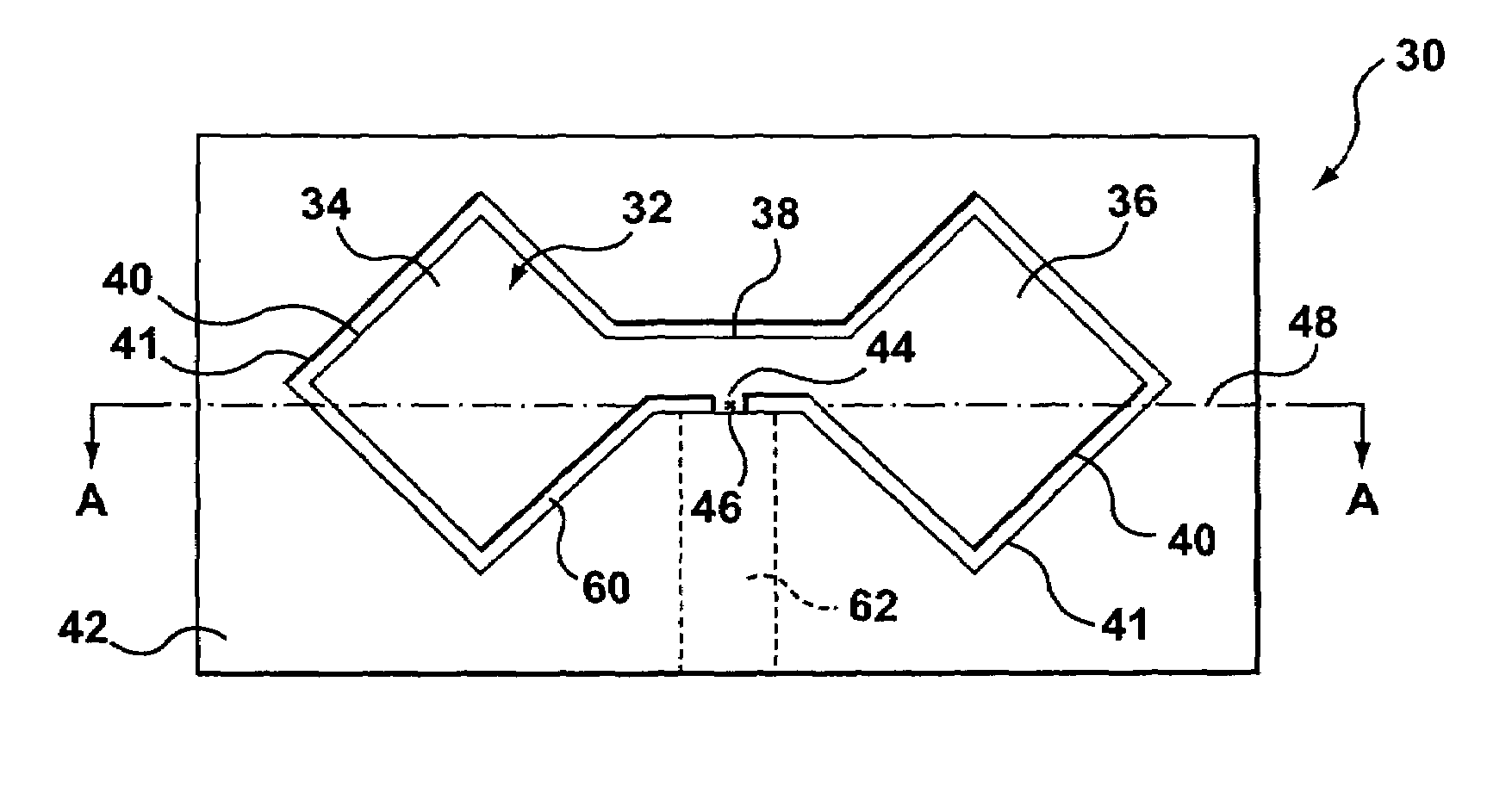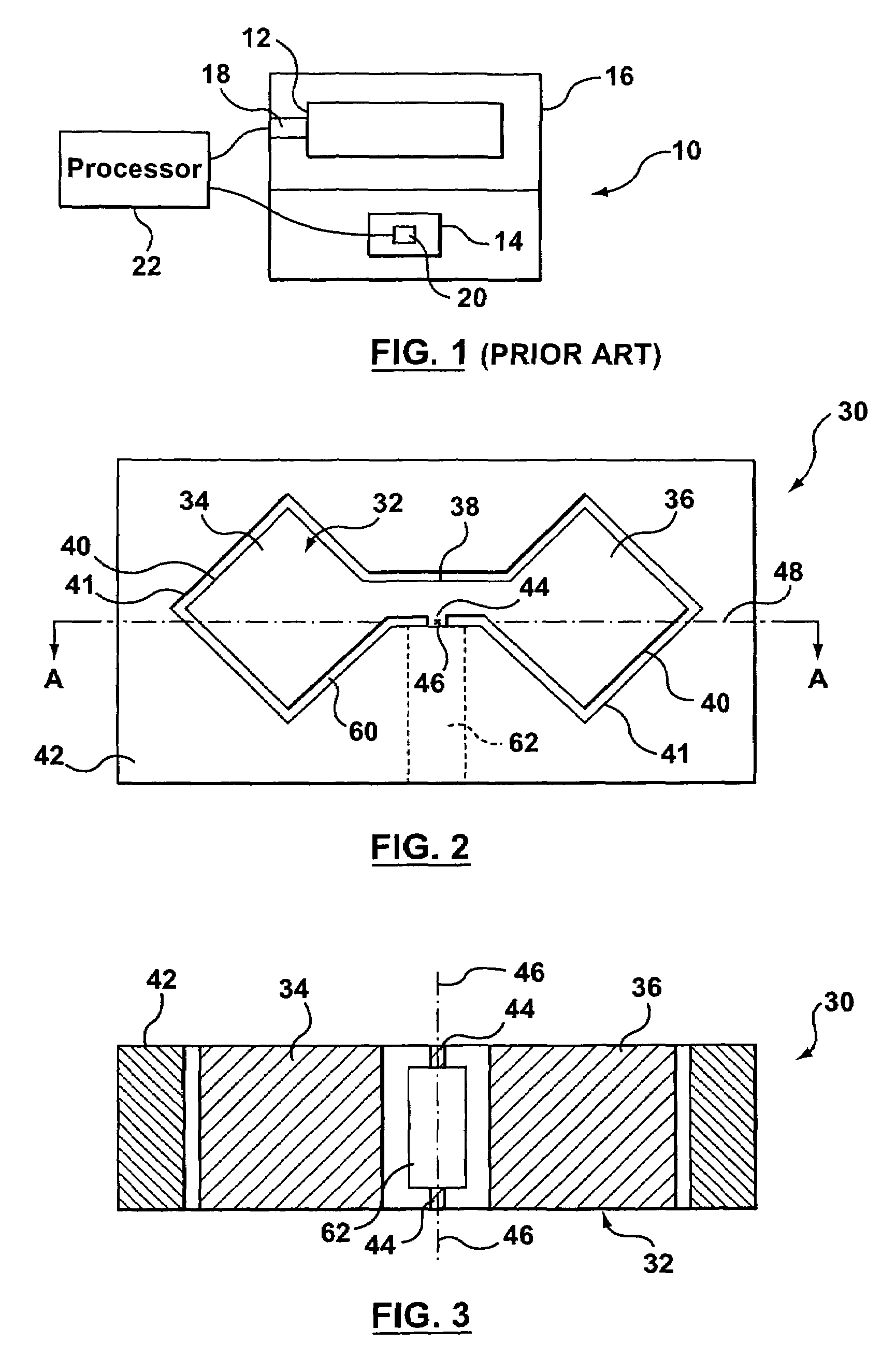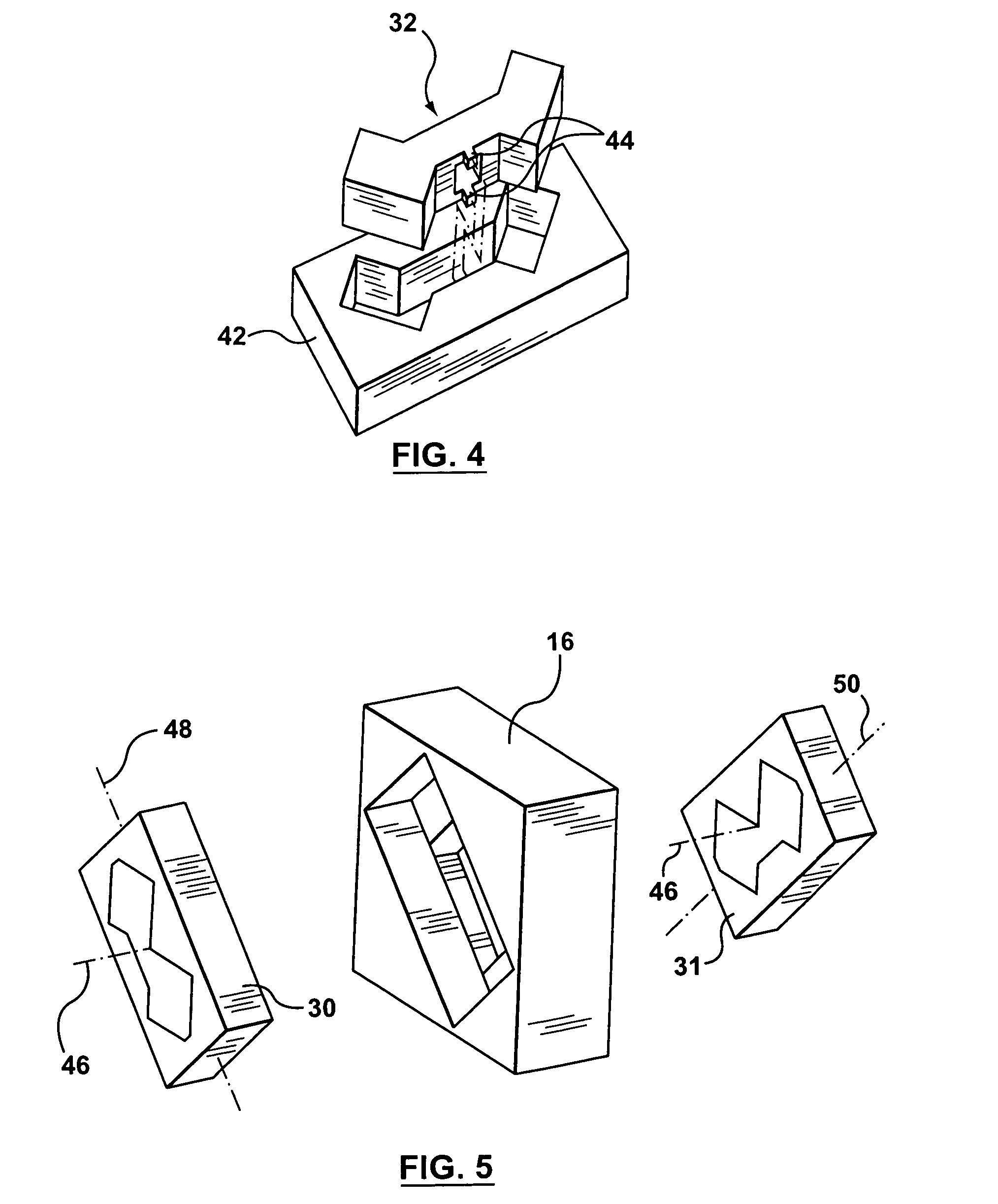Gravity gradiometer
a gravity gradient and gravity gradiometer technology, applied in the field of gravity gradients, can solve the problems of limited performance of airborne gravity gradiometers, weight, size, complexity of liquid helium cryostats, etc., and achieve the effect of improving characteristics
- Summary
- Abstract
- Description
- Claims
- Application Information
AI Technical Summary
Benefits of technology
Problems solved by technology
Method used
Image
Examples
first embodiment
[0025]Reference is next made to FIGS. 2 to 4, which show a quadrupole responder 30 of an OQR-type gravity gradiometer according to the invention. As discussed, a gravity gradiometer would normally include two quadrupole responders 30, 31 (FIG. 5).
[0026]As shown in FIGS. 2 to 4, the quadrupole responder 30 includes a bow tie shaped mass quadrupole or balance beam 32, having two enlarged end portions 34, 36 joined by a center portion or bridge 38. The bow tie shape shown is convenient to increase the quadrupole moment of the mass quadrupole or balance beam 32 (thus increasing its response to gravity gradients) and to provide faces 41 on which to mount sensors to detect motion of the quadrupole responder (as will be described).
[0027]The mass quadrupole 32 is located in a housing 42 and is supported on the housing by a torsional spring comprising two or more flexure posts 44 (a pair of such posts is shown in FIGS. 3 and 4). Line 46 running through the center of flexure of each of the fl...
second embodiment
[0107]For this second embodiment of the invention involving the use of glassy metal materials for the flexures of quadrupole responders, there are several well-known manufacturing processes that are available for making such flexures and quadrupole responder structures using glassy metals. In one of these techniques (direct casting), a mould is made which is a matrix for the final part (that is, whose internal cavity has the desired shape of the final part). This mould is placed in a quench medium (e.g. anti-freeze containing dry ice). The constituent elements of the selected glassy metal are placed in a receptacle, such as a crucible or a sealed quartz chamber, and heated to a temperature above the liquidus of the glassy metal. The molten glassy metal is then injected or allowed to flow from the receptacle into the mould; the quench medium surrounding the mould causes sufficiently rapid cooling to produce a glassy metal structure of the desired shape in a bulk form.
[0108]However in...
PUM
 Login to View More
Login to View More Abstract
Description
Claims
Application Information
 Login to View More
Login to View More - R&D
- Intellectual Property
- Life Sciences
- Materials
- Tech Scout
- Unparalleled Data Quality
- Higher Quality Content
- 60% Fewer Hallucinations
Browse by: Latest US Patents, China's latest patents, Technical Efficacy Thesaurus, Application Domain, Technology Topic, Popular Technical Reports.
© 2025 PatSnap. All rights reserved.Legal|Privacy policy|Modern Slavery Act Transparency Statement|Sitemap|About US| Contact US: help@patsnap.com



